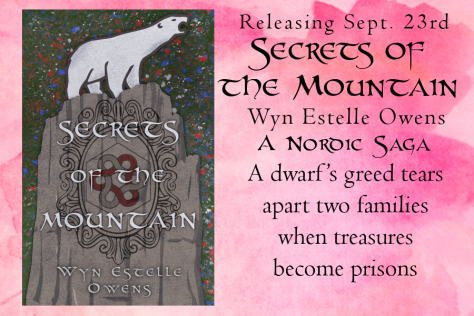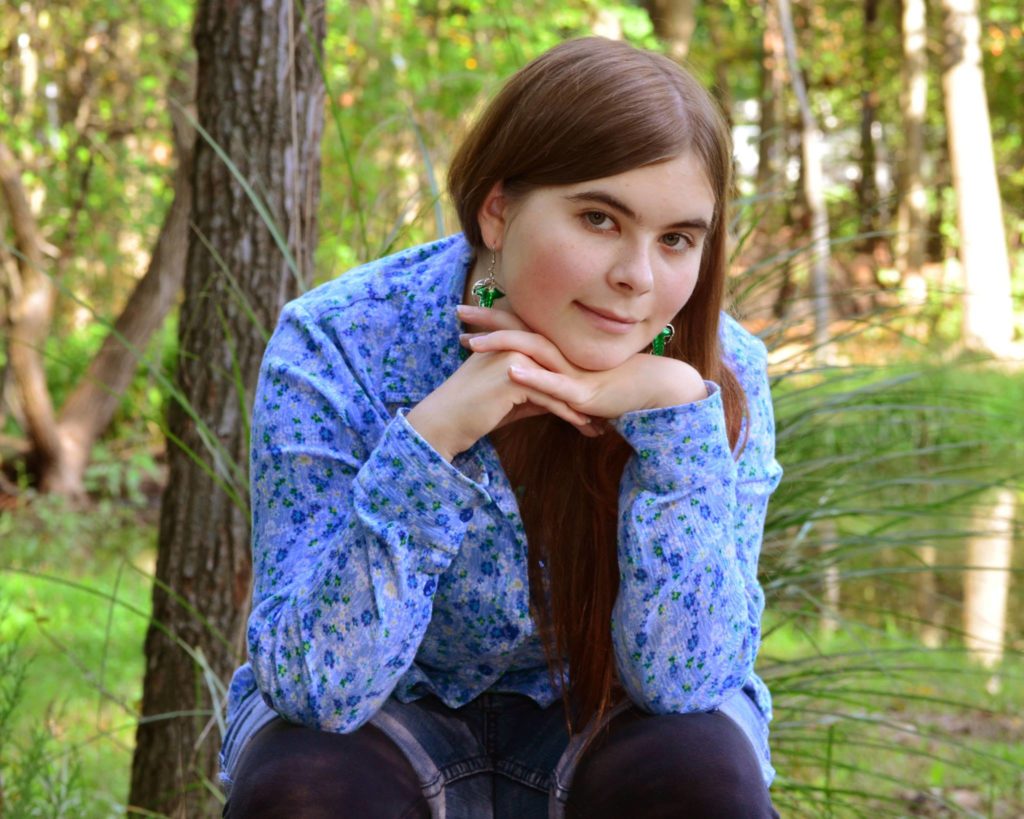
So, last week I kind of turned into a disaster when it came to the internet, though I couldn’t tell you what actually happened to me besides the bedroom explosion (actually caused by replacing a desk with a wardrobe). Why don’t we just pretend this is a week ago and continue to ignore the date until I’ve actually read the books that I was supposed to review last week.
For now, I have Wyn Owens talking about Vikings in her new book Secrets of the Mountain. I haven’t begun to read it yet, but if it’s anything like other books of hers, it will be good. Now, over to Wyn.
“Snow White and Rose Red and Vikings”
Whenever you set out to write a story, you have to figure out where the story is going to take place. You can come up with characters and plot all you want, but until you have a stage to put them on, you aren’t going to go anywhere. The setting is the structure that supports the story; a good setting will not only support the story but interweave itself into the narrative, giving extra meaning and subtext to your plot and your characters.
When you retell a fairytale, picking the setting is doubly important. You have to figure out how to fit this fairytale into a new world. Even if you’re sticking with the same basic ‘medieval fantasy’ setting you drew the fairytale from—which is a perfectly fine solution and has been used many times to great effect—you want to figure out how you can take this setting and use it to tell your tale; to figure out how the themes of the fairytale can meld or clash with that of the society and culture you’ve placed it in.
When I began planning for my submission to the Frosted Roses challenge, the first thing I began to work on was figuring out my setting. I had a couple options, and the deciding factor came down to this: I very much wanted my retelling to have a Polar Bear.
This obviously greatly reduced my options for where I could set the story, and since there is only one culture with polar bear proximity with which I have any familiarity, I went with a Nordic setting: the culture of the Vikings.
When I was first plotting out the story, I drew a lot of inspiration from East of the Sun, West of the Moon, a Norweigan fairy tale that involves a polar bear. As I slowly built the world of the Northlands, I continued to draw in more inspiration from Norse myths. There are dwarves and elves in this world, like the Norse people believed long ago. Several of the Norse myths also show the folly of greed, which quite aptly played into my purposes.
I also took into consideration the nature of the old Nordic peoples. Since I don’t like to write my protagonists as bloodthirsty, glory-seeking marauders, in my Northlands the traditional ‘going a-Viking’ is rarer and mostly only performed during wartime. Instead, my Northmen are seafaring traders, venturing across the waves and buying and selling valuable things—which is something the historical Norsemen did (though many of their valuables were ill-gotten).
When it came to applying Snow White and Rose Red to Viking and Nordic culture, I had one great advantage: the importance of family. To the Norsemen of old, the family was incredibly important. Family stuck together and had each other’s backs; they stuck by each other no matter what—in good times and bad. Anyone who betrayed this trust was an outlaw and cast out from their family. The Nordic concept of family went beyond just parents and children, to include grandparents, cousins, and foster-children, who were often considered to be as good as a blood relation.
One of the main themes of Snow White and Rose Red is also the importance of family; of sticking together and cherishing each other. Another is the dangers of greed: Snow White and Rose Red promise to share everything with each other, while the dwarf hordes his ill-gotten riches.
These blend easily with the culture of the Norsemen I chose as the tale’s backdrop, so the fairytale and story extend naturally from the wild Northern lands I placed it in.
About . . .
Secrets of the Mountain

If there’s one thing Svanhilda has always known, it’s the importance of family. When her little sister Rósfrída was born, Svanhilda promised her mother that she and her sister would stick together. But as the years passed, tragedy after tragedy befell her family, ripping it apart piece by piece, until only Svanhilda remains at home with her ailing mother. And Rósfrída? She has stayed with Svanhilda, as they promised long ago—every time Svanhilda looks at her reflection, she sees her little sister instead, trapped in a prison of mirrors and treasure. Their only hope is that either their seafaring Father or Rósfrída’s strange bear friend might find a way to free her.
Tryggvi lost his mother and father a long, long time ago—so long ago that he barely remembers them. When a boy prince named Asbjǫrn finds him wandering in the woods, he takes Tryggvi home and calls him brother, and his parents welcome Tryggvi as their son. Some years later, Asbjǫrn leaves to study for a year… but he never returns, and is thought dead and gone.
But Tryggvi is convinced his brother still lives–and not without evidence. So, now that he is finally old enough, Tryggvi sets out to find Asbjǫrn, armed with his cat and an amber pendant which enables him to see the truth of things. And he will find out the truth and bring his big brother home. After all, he promised his baby sister he would, and that’s not a promise he’s willing to break.
On the mountain there is a cave, and in the cave there is a mirror, and in that mirror live two friends: a girl and a bear, trapped in secrets, imprisoned by treasures of great worth. But help is coming, and the secret deeds done in darkness will be revealed, and the prisoners will be set free.
Find it on: Amazon || Goodreads
Wyn Estelle Owens

Wyn Estelle Owens is the penname of a young woman who’s still figuring out what this whole ‘adult’ thing is all about. She lives in a big, old house in Maryland by a Hundred Acre Wood (dubbed Neldoreth) with her parents, three occasionally obnoxious brothers, her dog Jackie, and her personal plot bunny, Joker.
She is fond of reading, writing, drawing, speaking in dead or imaginary languages, playing videogames, quoting classic or obscure literature, being randomly dramatic, and generally making things out of yarn. Her dream is to write stories that inspire people to chase after the wonderful world of storytelling.
Her favorite all-time authors are Anne Elisabeth Stengl, Christa Kinde, and above all, J.R.R. Tolkien, who first inspired her to pursuing novel writing when she read the Hobbit at the age of seven.
Find her online at: Goodreads || Facebook || Amazon
The Frosted Roses
The Frosted Roses are six retellings of the Snow White and Rose Red fairytale, each one fantastical and magical. You don’t want to miss any of them! You can learn more about the books and find the full tour schedule on the tour page.
The Frosted Roses are the result of the 2020 Arista Challenge. The Arista Challenge is hosted by Kendra E. Ardnek; it invites fairy tale authors to come together in community as they work on unique retellings of a selected fairy tale.

